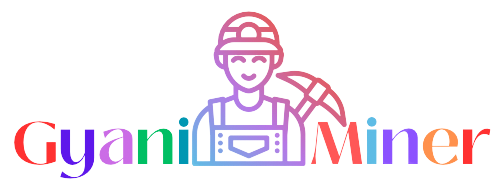Continued from the previous article…..
First read:
Is Mining Still Profitable After Auctions? Expert Insights (Part-I)
Then……
Levies for Non-Auctioned Mines:
To facilitate easy comparison, let’s express all costs as a percentage of the Average Sale Price (ASP).
- Royalty: 15% of ASP
- District Mineral Foundation (DMF): 30% of Royalty, which is equivalent to 4.5% of ASP
- National Mineral Exploration Trust (NMET): 2% of Royalty, or 0.3% of ASP
- Premium: Not Applicable
- Production Cost: Approximately 12% of ASP (Note: This cost remains consistent for both auctioned and non-auctioned mines)
- GST: 5% of Sale Price, which translates to 6% of ASP (assuming the sale price is a maximum of 120% of ASP)
- Other Levies: Approximately 3% of ASP (Note: This cost remains consistent for both auctioned and non-auctioned mines)
Total Expenditure: The sum of Royalty, DMF, NMET, Premium (if applicable), GST, Other Levies, and Production Cost amounts to (15 + 4.5 + 0.3 + 0 + 6 + 3 + 12)% of ASP, which equals 40.8% of ASP.
Levies for Auctioned Mines:
To facilitate easy comparison, let’s express all costs as a percentage of the Average Sale Price (ASP).
- Royalty: 15% of ASP
- District Mineral Foundation (DMF): 10% of Royalty, which is equivalent to 1.5% of ASP
- National Mineral Exploration Trust (NMET): 2% of Royalty, or 0.3% of ASP
- Premium: 110% of ASP (Considering the prevailing auction trend where most mines are auctioned with a premium higher than 110%)
- Production Cost: Approximately 12% of ASP (Note: This cost remains consistent for both auctioned and non-auctioned mines)
- GST: 5% of Sale Price, which translates to 6% of ASP (assuming the sale price is a maximum of 120% of ASP)
- Other Levies: Approximately 3% of ASP (Note: This cost remains consistent for both auctioned and non-auctioned mines)
Total Expenditure: The sum of Royalty, DMF, NMET, Premium, GST, Other Levies, and Production Cost amounts to (15 + 1.5 + 0.3 + 110 + 6 + 3 + 12)% of ASP, which equals 147.8% of ASP.”
Let’s compare the Profitability:
Allow me to simplify the aforementioned computations for your convenience. We will conduct a comparative analysis of the overall expenditures and sales prices in both scenarios: the auctioned and non-auctioned contexts.
For Non-auctioned Mines:
Total Expenditure- 40.8% of ASP
Sales Price- 120% of ASP (as assumed)
Net Profit- (120-40.8)/120= 66%
For Auctioned Mines:
Total Expenditure- 147.8% of ASP
Sales Price- 120% of ASP (as assumed)
Net Profit- (120-147.8)/120= -23% (Loss)
Comparison:
Therefore, based on the aforementioned comparison, it becomes evident that non-auctioned mines exhibit a significant level of profitability with substantial profit margins. Conversely, the situation for auctioned mines presents a stark contrast. These mines not only fail to generate profits but also operate at a substantial loss. It is important to note that this outcome is a result of their deliberate choice to participate in the auction process, where they willingly accepted a substantial premium for their mining rights.
But is it the case for all the Auction Mines?
Certainly, Not.
After carefully reviewing these comparisons, you may have observed that for most of the Auctioned Mines, we’ve used an auction premium of 110% for our analysis. It’s important to emphasize the phrase “most of the Auctioned mines” in this context because there are a few exceptions where mines have been auctioned for less than 100%. To be precise, I can recall only 3 to 4 mines in Odisha that were auctioned below the 100% mark. Let’s consider an example from one of these mines as well.
The inaugural iron ore mines auction in Odisha commenced with the Sagasahi Iron Ore Mine, fetching a premium of 44.35%. When evaluating its financial viability using our established methodology, the net profitability stands at an impressive 42.65%, indicative of a robust profit margin.
This implies that the auction method itself does not pose a profitability concern; rather, the challenge lies in the aggressive nature of the bidding. If the bids remain below approximately 60%, the mines can still achieve profitability even with all existing levies. Therefore, it is not the government that has rendered the mining business unprofitable; rather, it is the steel capitalists who have strategically shifted the balance in their favor by undermining the profitability of mining. This calculated move allows them to solidify their presence in the mining industry while concurrently boosting their profit margins in steel production to offset any losses incurred in mining operations.
Upcoming articles:
“What measures should the government employ to manage auction premiums effectively and enhance the profitability of mining operations?”
“The Abnormal premium and its effect”
“Who pays the premium: the Steel makers or the innocent public”
“Is there any way to enhance the profitability with the existing scenarios?”
“Impact of Higher Auction premium on the Mining industry?”
Signing Off
You will love reading these as well:
Is Mining Still Profitable After Auctions? Expert Insights!!!
Highest Iron Content in Different Iron Ores: Unearthing the Riches


Nice content rich arricle